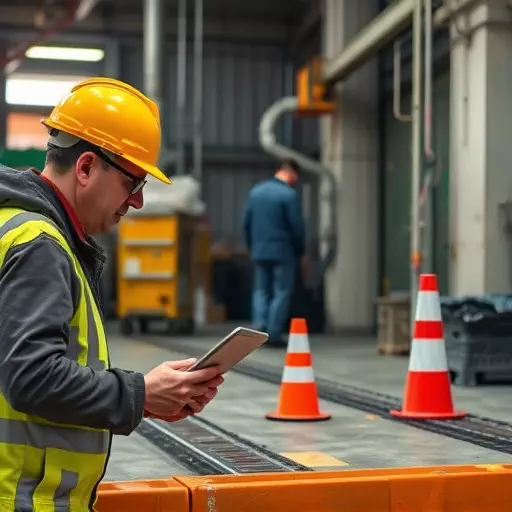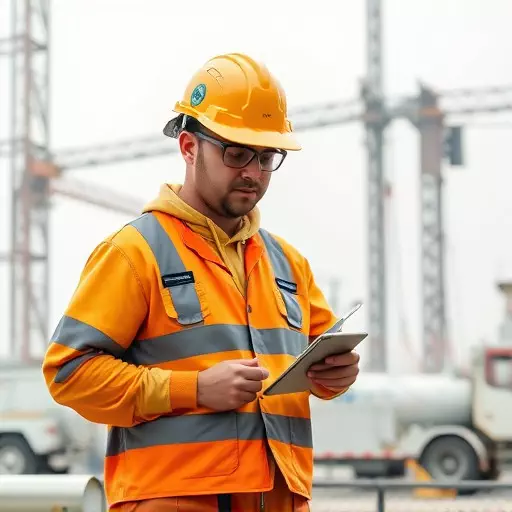The latest occupational safety news highlights a rising trend of incidents in confined spaces due to inadequate risk assessments, lack of training, and ineffective safety management. To mitigate these risks, organizations must implement robust safety protocols, including comprehensive risk assessments, well-defined procedures, regular training, and integration of advanced technologies like wearable devices and real-time monitoring. By staying current with emerging occupational hazards and regulatory changes, companies can foster a culture of safety within confined areas, ensuring worker protection, accident prevention, and compliance with industry standards.
In today’s industrial landscape, confined space work is an increasingly prevalent yet potentially deadly endeavor. As the latest occupational safety news highlights, emerging occupational hazards within these environments demand heightened vigilance. This article delves into critical aspects of confined space safety, including an understanding of these unique risks and implementing effective safety management systems. We explore best practices to ensure today’s workers navigate these challenges safely, staying ahead of evolving industry standards and maintaining a culture of proactive safety.
- Understanding Confined Spaces and Emerging Hazards
- Implementing Effective Safety Management Systems
- Best Practices for Ensuring Confined Space Safety Today
Understanding Confined Spaces and Emerging Hazards
Confined spaces, as defined by the Occupational Safety and Health Administration (OSHA), are areas that are enclosed or partially enclosed, limited in size, and not designed for continuous occupancy. These spaces can pose significant risks to workers due to their unique challenges, such as restricted access and potential hazards like toxic gases, lack of oxygen, or entrapment. With the ever-evolving work environment, emerging occupational hazards have added new dimensions to confined space safety.
The latest occupational safety news highlights an increasing number of incidents related to confined spaces, often resulting from inadequate risk assessments, a lack of proper training, or failure to implement effective safety management systems. As work environments become more dynamic and diverse, with activities ranging from construction and maintenance to chemical processing and manufacturing, understanding emerging hazards is crucial. By staying updated with the latest occupational safety trends and implementing robust safety protocols, organizations can ensure that their workers are protected when operating in confined spaces.
Implementing Effective Safety Management Systems
In today’s fast-paced and ever-evolving work environments, implementing robust safety management systems is paramount to addressing emerging occupational hazards, especially in confined spaces. The latest occupational safety news highlights a growing need for proactive measures to mitigate risks associated with these hazardous areas. Effective safety management involves a comprehensive strategy that includes thorough risk assessments, well-defined procedures, and regular training for all personnel involved. By adopting advanced techniques and staying updated with the evolving regulatory landscape, organizations can ensure a culture of safety within confined spaces.
Safety management systems play a crucial role in preventing accidents and protecting workers’ lives. These systems should incorporate up-to-date information on emerging occupational hazards, industry standards, and best practices. Regular audits and reviews enable continuous improvement, ensuring that the organization remains compliant and prepared to handle any challenges that may arise. With the right safety management system in place, companies can effectively manage risks, promote a safe work environment, and foster a positive culture of workplace safety.
Best Practices for Ensuring Confined Space Safety Today
In today’s digital era, confined space safety has evolved significantly, driven by the latest occupational safety news and emerging occupational hazards. One of the key components in ensuring optimal safety is integrating comprehensive safety management systems into daily operations. These systems not only streamline risk assessment processes but also facilitate effective communication and coordination among team members. Regular training sessions that keep up with industry standards and best practices are vital, ensuring workers are equipped to handle any situation. By adopting these advanced approaches, organizations can significantly reduce risks associated with confined spaces, aligning with the evolving needs of modern industries.
Additionally, leveraging technology plays a crucial role in enhancing safety measures. Wearable devices and real-time monitoring systems provide continuous data, enabling quick decision-making and proactive interventions. Regular audits and meticulous record-keeping further strengthen safety management, allowing for continuous improvement. As occupational safety standards continue to grow, staying informed and adaptable is essential to navigate the dynamic landscape of confined space safety, fostering a culture of safety among workers at all levels.


